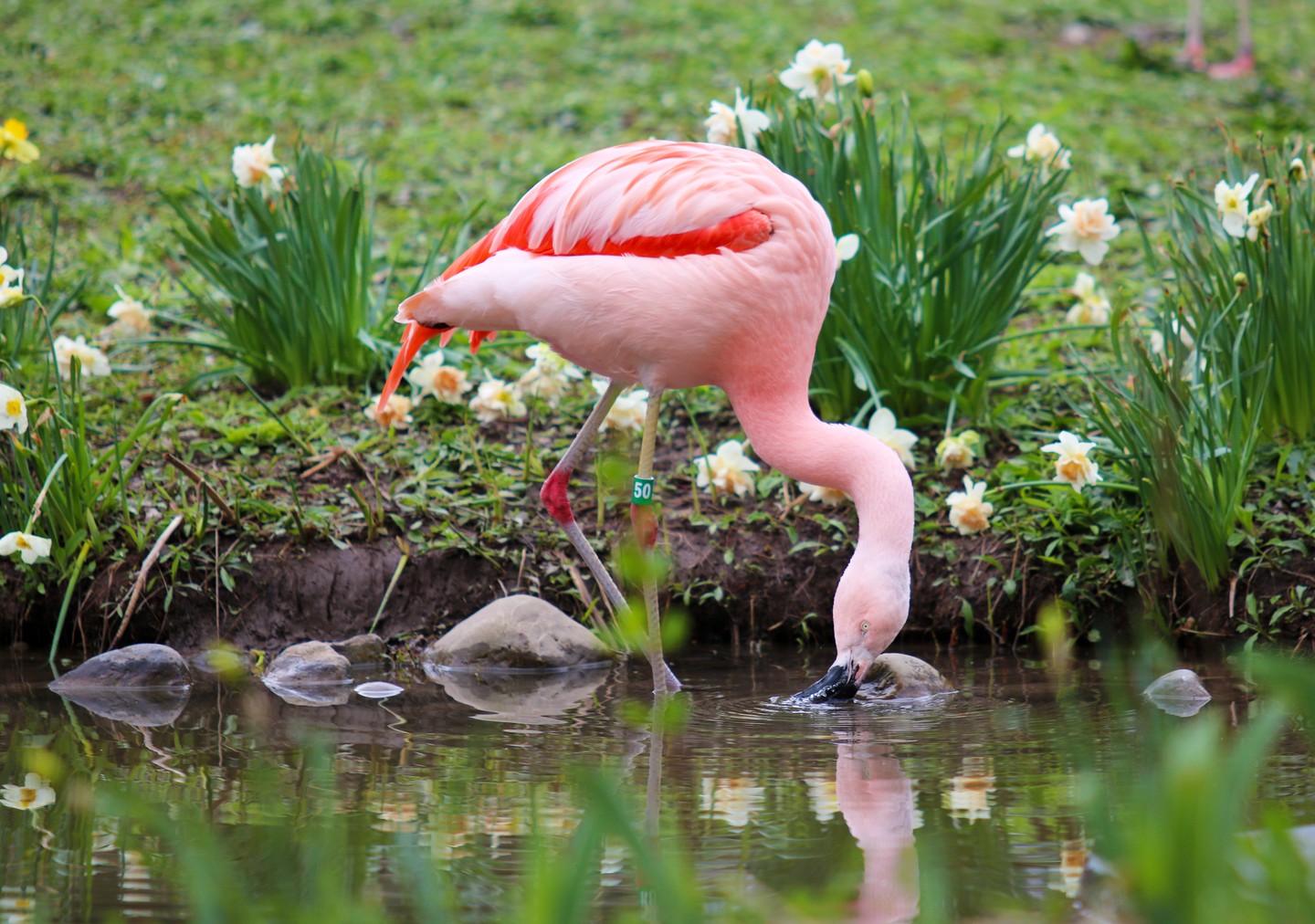- The significance of International Flamingo Day and its relevance to wildlife conservation.
- Unique feeding adaptations of the Chilean flamingo and their ecological implications.
- The impact of Avian Influenza on zoo management and wildlife care.
- Conservation efforts and health monitoring of flamingos in captivity.
- The role of zoos in educating the public on flamingo conservation and environmental awareness.
International Flamingo Day offers a platform to celebrate these fascinating birds and highlight the importance of wildlife conservation. Flamingos, known for their striking pink plumage, exhibit intriguing behaviors and adaptations that captivate both scientists and the public. Among the various species, the Chilean flamingo stands out for its specialized feeding techniques and habitat preferences.
Chilean flamingos possess a unique adaptation in their bills that allows them to thrive in their environments. These flamingos feed by holding their bills upside down in the water, rhythmically moving their heads side to side. This motion allows them to filter small organisms from the water using comb-like structures inside their bills, functioning as an efficient sieve. Their diet primarily consists of algae, small crustaceans, and other microscopic life forms, which contribute to their distinctive pink coloration. This feeding method not only showcases a fascinating evolutionary adaptation but also underscores the complex ecological roles flamingos play in their ecosystems. Their feeding activities help control the populations of their prey, maintaining a balance in their aquatic habitats.
The health of flamingo populations is a major concern for zoos, particularly in the face of threats like Avian Influenza. This infectious disease poses significant risks to bird species worldwide, prompting zoos to adopt stringent biosecurity measures to protect their avian inhabitants. While some flamingos may be taken off exhibit as a precaution, regular health monitoring, including screening for diseases, ensures that these birds remain healthy and vibrant. Continued vigilance is essential to prevent the spread of illnesses and protect both zoo populations and wild flocks.
Flamingos in captivity are monitored through a range of health management practices. Regular veterinary check-ups, nutritional monitoring, and behavioral observations form the backbone of these practices, ensuring flamingos receive optimal care. Advanced diagnostic tools allow veterinarians to detect potential health issues early, providing timely interventions. Collaborative efforts with conservation organizations strengthen these initiatives, expanding the knowledge base and improving care standards for these magnificent birds.
Zoos play a crucial educational role, utilizing opportunities like International Flamingo Day to raise public awareness about flamingo conservation and broader environmental issues. Exhibits and educational programs inform visitors about the challenges facing flamingos in the wild, including habitat loss and climate change. By fostering a connection between visitors and these birds, zoos inspire conservation action and promote sustainable practices.
Behind the scenes, zoos engage in breeding programs and research efforts to support flamingo populations. Captive breeding programs are designed to boost genetic diversity and maintain stable captive populations, ensuring the survival of these species. Research initiatives focus on understanding flamingo behavior, reproductive biology, and nutritional requirements, directly contributing to conservation strategies.
Through collaboration with international conservation organizations, zoos contribute to habitat restoration projects and support anti-poaching efforts. Such initiatives aim to preserve the natural habitats of flamingos, providing safe environments where they can thrive. These comprehensive conservation efforts highlight the interconnectedness of zoo management, wildlife health, and ecological preservation.
Environmental sustainability and wildlife conservation remain at the forefront of zoo commitments. International Flamingo Day serves as a reminder of the delicate balance needed to protect these iconic birds and their habitats. By understanding and valuing the critical roles flamingos play in their ecosystems, we can better appreciate the need for conservation efforts and inspire future generations to continue these endeavors.
Zoos must continue to balance public engagement with the welfare of their inhabitants, evolving their practices in response to emerging challenges. The ongoing battle against Avian Influenza and other diseases exemplifies the dynamic nature of zoo management and conservation work. Through continued innovation and dedication, zoos strive to protect flamingos and promote a sustainable future for wildlife and humans alike.
In summary, International Flamingo Day highlights not just the beauty of these birds but the vital role they play in their ecosystems and the importance of conserving their species. Through specialized care, education, and global collaboration, zoos stand as key players in the concerted effort to preserve these remarkable creatures for future generations.
*****
Source Description
It’s International Flamingo Day! 🦩Fancy a flamingo fact? Our Chilean flamingos have a bill specially adapted for their unique feeding method. To eat, Chilean flamingos will hold their bills upside down in the water and move their bills back and forth, filtering out minute organisms through special comb-like filtering structures that function like a sieve.
While our birds remains off exhibit as a precaution against Avian Influenza, we are happy to report that all of our animals remain healthy and continue to test negative for the disease.


